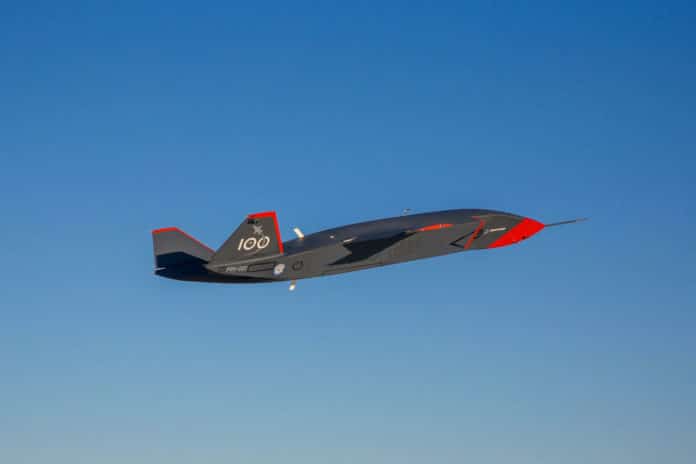Boeing Australia has expanded its flight-test program of the Boeing Airpower Teaming System, with two of its Loyal Wingman prototype combat drones successfully completing separate flight missions at the Woomera Range Complex.
For the first time, the landing gear on the Loyal Wingman aircraft was raised and engaged. A second aircraft also successfully completed its first flight mission.
Loyal Wingman aircraft, developed jointly with the Royal Australian Air Force (RAAF), took to the skies for the first time on February 27, 2021. It is the first combat aircraft designed and manufactured in Australia in over half a century. The tests made it possible to evaluate the main parameters of the controllability of the aircraft, its navigation system, communication with the ground, and a number of other indicators.
During the flight-test missions, the teams collected aircraft performance data that will be used to inform and refine the digital twin of the Boeing Airpower Teaming System, with the view to accelerate the aircraft’s development and production where possible. The digital twin models the system’s entire lifecycle, from design and development to production and sustainment, and contributes to speed and first-time quality.
“It is so exciting seeing two aircraft in the air as the Loyal Wingman continues to excel in the flight-test program,” said Air Vice-Marshal Cath Roberts, RAAF Head of Air Force Capability. “This opens up significant capability agility for the Air Force, particularly with features such as the reconfigurable nose. We’re heavily engaged in the payload development and the element of surprise that it gives us in the battlespace. You never really know what’s in the nose.”
At 11 meters in length and a wingspan of 11.7 meters, the Loyal Wingman is designed to achieve “fighter-like performance” and a range of up to 3,704 km. The jet-powered combat drone is designed to work jointly with other RAAF combat aircraft, including the F-35A, F/A-18F, and E-7A, in both defense and surveillance modes. The drone has flight characteristics comparable to a conventional fighter and is equipped with a standard set of artificial intelligence, surveillance, and reconnaissance missions.
For the UAV, the so-called modular principle was chosen: the payload will be placed in replaceable bow compartments, installed depending on the type of mission. The aircraft will fly alongside other platforms, using artificial intelligence to team with existing crewed and uncrewed assets to complement mission capabilities.
